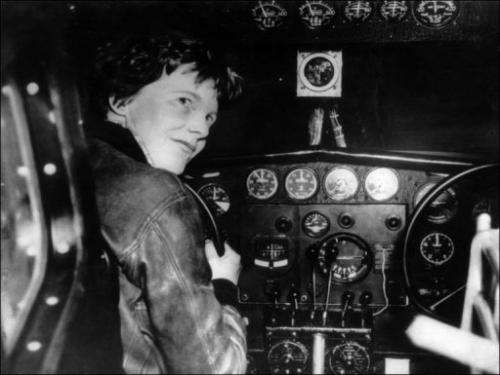November 4, 2016 report
Amelia Earhart might have died as a castaway

American aviator Amelia Earhart became famous in the 1930s for her flying adventures—at one point, she became the first woman to fly solo across the Atlantic Ocean. But it was her sudden disappearance in July 1939 that truly sent her name into the history books. But the mystery of what happened to her and her co-pilot Fred Noonan has never been solved. Now, a team called the International Group for Historic Aircraft Recovery (TIGHAR) believes they may have evidence that suggests Earhart did not simply crash her twin-engine Electra into the ocean and die, but instead, lived for a time on an island called Nikumaroro. The team has published an account of their findings on their Earhart Project website.
What is known is that Earhart and Noonan took off from a tiny airport called Lae in Papua, New Guinea, on July 2, 1937—their reported destination was Howland Island, a tiny speck in the Pacific Ocean that would provide them fuel to continue their quest to circumnavigate the world. But radio contact was lost before they reached that destination and neither was ever heard from again. An exhaustive search was undertaken but no signs of a crash could be found. The government called off the search and declared the pair dead in 1939.
Others have reported finding human artifacts on Nikumaroro as far back as 1940, including a skeleton, but there was nothing to link any of it to the two aviators. Because the forearm seemed too long to belong to a woman, investigators dismissed them as belonging to a man. Some of the artifacts and bones were subsequently filed in a warehouse, where they sat until a new examiner studied them in the 1990s. He concluded that it was possible that the skeleton could have been female—he took pictures of the bones, but the skeleton itself was later lost.
Now, in this new effort, the researchers with TIGHAR have reopened the case and discovered that women had unusually long forearms during that era. Upon learning this, the team compared photographs of Earhart with arms exposed with the photographs of the bones found on the island and concluded that they were a very close match. They also claim they have evidence of Earhart making radio transmissions up till July 6th, proving she was still alive long after the plane would have run out of fuel.
None of this proves the remains are those of Earhart, of course; that could only happen if the skeleton were found and subjected to DNA testing. But it does offer another piece of evidence that suggests that Earhart and her co-pilot might have lived as castaways stranded on a remote island for at least some period of time.
© 2016 Phys.org



















